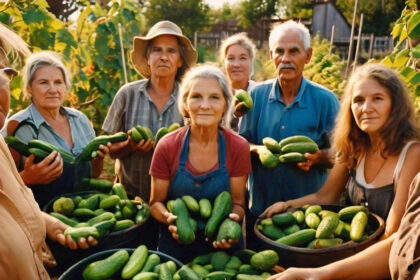Knowing the appropriate plants or crops for gardening in Texas ensures a happy harvest with less stress.
Timely planting helps gardening in Texas come alive as warm temperatures and longer days encourage planting. It is beneficial for gardeners when they focus on warm-season crops, vibrant flowers, and native plants for vigorous gardens throughout the season.
This guide offers significant tips for Texas gardeners, helping them choose the right plants and planting times in April to maximize growth, ensure healthy gardens, and achieve successful harvests.
Texas Climate and Zones
Successful gardening in Texas requires understanding the Texas climate. What to the plant in Texas? The state characteristics of different climate types include humid subtropical regions in the east, characterized by warm summers and mild winters, and semi-arid areas in the west, which experience less rainfall and greater temperature fluctuations.
Texas falls within USDA hardiness zones 6 to 10. This guides gardeners in selecting plants suited to their area’s temperature extremes.
Knowledge about the local climate helps determine what to plant in April in Texas, the best planting times, suitable crops, and effective gardening practices, ensuring optimal growth and a thriving garden throughout the April planting season.
TIP1: Check Local Frost Date
Safe planting in Texas requires an understanding of the local frost dates and what to plant in April in Texas. More plants are not tolerant to frost, especially younger ones, causing a growth hindrance or even killing them. This season causes microbial deactivation and solidification of nutrients, which some plants find difficult to break down into smaller particles for use.
You can get an insight into local frost date information on resources like the USDA Plant Hardiness Zone Map, local agricultural extension offices, or gardening websites. These sources provide valuable insights into your specific zone and its average frost dates.
In Texas, the recommended planting times often start after the last time, typically in mid-April for northern regions and as early as late March for southern areas.
Planting after this date minimizes the risk of frost damage, allowing gardeners to establish warm-season crops like tomatoes and peppers, ensuring a vigorous and fruitful growing season. Yield can be maximized when planting at the correct time, ensuring a healthy garden throughout the warmer months.
TIP 2: Choose Warm-Season Crops
Choosing warm-season crops for what to plant in April in Texas is needed for a successful garden. Some top vegetables to plant include tomatoes, peppers, cucumbers, squash, and eggplants, all thriving in warmer temperatures.
Additionally, herbs such as basil, cilantro, and oregano bloom in spring, providing flavorful additions to meals. Flowers like marigolds, zinnias, and sunflowers can also be planted to enhance garden aesthetics and attract pollinators.
Selecting warm-season crops benefits Texas gardens through maximization of growth potential and yield. These crops are adapted to the region’s heat and can withstand higher temperatures, reducing the risk of damage.
Furthermore, planting in April allows crops to establish roots before the peak summer heat, ensuring healthier plants and more robust harvests.
Gardeners can enjoy vibrant, productive gardens that flourish throughout the growing season when they focus on warm-season options.
TIP 3: Consider Soil Temperature
This is vital when deciding what to plant in April in Texas if soil temperature is considered, as it directly impacts seed germination and plant growth. Most warm-season crops, such as tomatoes and peppers, require soil temperatures to be consistently between 65°F and 75°F (18°C to 24°C) for optimal germination.
Planting when soil temperatures fall within this range encourages faster germination and healthier seedlings.
The use of a soil thermometer can be used to check the temperature of the soil. This can be done by inserting it in about 2-4 inches deep of the soil for an accurate reading.
Alternatively, you can monitor local weather reports or gardening websites that provide regional soil temperature data.
Gardeners can time their planting effectively, leading to stronger plants and more abundant yields throughout the growing season in Texas. This awareness of the soil temperature can significantly enhance gardening success.
TIP 4: Use Native and Drought-Resistant Plants
In a state that is often hot and dry, the sustainability and resilience of plants are promoted if native and drought-tolerant plants are utilized. Native species, being naturally adapted to local conditions, require less water, fertilizer, and maintenance, which conserves resources and supports local ecosystems.
Drought-resistant plants also develop well with minimal irrigation, making them ideal for Texas, where water conservation is crucial.
Some native and drought-tolerant plants that can be cultivated in Texas are Texas sage, Blackfoot daisy, and yucca, which adds unique textures and colors to landscapes.
In establishing vegetable gardening, drought-resistant varieties of okra and peppers are excellent choices. Incorporating these crops in the garden, there is a need to group them based on their water requirement.
Planting these varieties in well-drained soil and adding mulch will increase moisture retention and again regulate soil temperature.
Integrating native and drought-resistant plants reduces garden upkeep, promotes biodiversity, and ensures a garden that can endure Texas’s varied climate conditions.
TIP 5: Plan for Watering and Maintenance
What to plant in April in Texas, needs conservation of water is a bit challenging, so for gardeners, it will be important if there are watering schedules for crop growth. Consistent watering ensures that newly planted crops develop strong roots, making them more adaptable to Texas’s heat.
Early morning watering helps retain moisture and reduces evaporation, while deep watering once or twice a week encourages deeper root growth for up-growing crops.
Routine maintenance for newly planted crops involves mulching, weeding, and monitoring for pests. Mulching around plants helps conserve moisture, regulate soil temperature, and suppress weeds, which compete for water and nutrients. Regularly inspect plants for signs of pests or disease to address issues early on.
The use of a soaker hose or drip irrigation system can ensure efficient watering. This will help monitor water and deliver water directly to the soil to reduce waste These methods help conserve water and ensure it reaches the plant roots where it’s needed most, promoting a sustainable and robust Texas garden.
Final Thought
Knowing what to plant in April in Texas involves understanding the climate and zones, choosing warm-season crops, checking soil temperature, incorporating native plants, and planning efficient watering and maintenance.
Going through these tips, Texas gardeners can set their plants up for success as temperatures rise. Don’t hesitate to experiment with new plants and enjoy the journey of gardening!
We’d love to hear about your planting experiences and any tips you have—please share them in the comments below.





